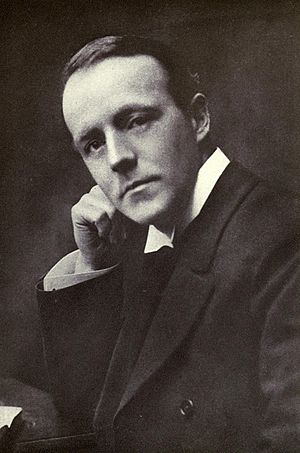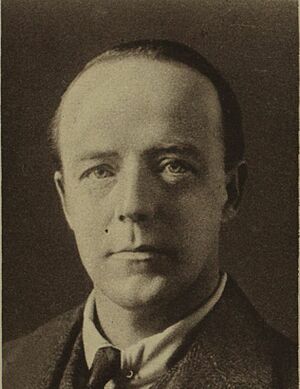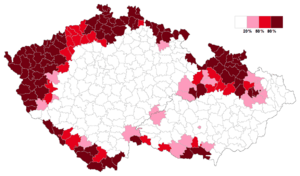Walter Runciman, 1st Viscount Runciman of Doxford facts for kids
Quick facts for kids
The Viscount Runciman
of Doxford |
|
|---|---|
 |
|
| President of the Board of Education | |
| In office 12 April 1908 – 23 October 1911 |
|
| Monarch | Edward VII George V |
| Prime Minister | H. H. Asquith |
| Preceded by | Reginald McKenna |
| Succeeded by | Jack Pease |
| President of the Board of Agriculture | |
| In office 23 October 1911 – 6 August 1914 |
|
| Monarch | George V |
| Prime Minister | H. H. Asquith |
| Preceded by | The Earl Carrington |
| Succeeded by | The Lord Lucas |
| President of the Board of Trade | |
| In office 5 August 1914 – 5 December 1916 |
|
| Monarch | George V |
| Prime Minister | H. H. Asquith |
| Preceded by | John Burns |
| Succeeded by | Sir Albert Stanley |
| In office 5 November 1931 – 28 May 1937 |
|
| Monarch | George V Edward VIII George VI |
| Prime Minister | Ramsay MacDonald Stanley Baldwin |
| Preceded by | Sir Philip Cunliffe-Lister |
| Succeeded by | Hon. Oliver Stanley |
| Lord President of the Council | |
| In office 31 October 1938 – 3 September 1939 |
|
| Monarch | George VI |
| Prime Minister | Neville Chamberlain |
| Preceded by | The Viscount Hailsham |
| Succeeded by | The Earl Stanhope |
| Personal details | |
| Born | 19 November 1870 |
| Died | 14 November 1949 (aged 78) |
| Nationality | British |
| Political party | Liberal National Liberal |
| Spouse |
Hilda Stevenson
(m. 1898) |
| Children | 5 |
| Parent |
|
Walter Runciman, 1st Viscount Runciman of Doxford (born November 19, 1870 – died November 14, 1949) was an important British politician. He was a member of the Liberal Party and later the National Liberal Party. In 1938, he went on a special diplomatic trip to Czechoslovakia. This trip was a key part of Britain's policy of trying to avoid war with Nazi Germany before World War II started.
Contents
Early Life and Education
Walter Runciman was the son of Walter Runciman, 1st Baron Runciman, who was a very successful shipping businessman.
He went to South Shields High School. Later, he studied history at Trinity College, Cambridge. He earned his Master of Arts degree in 1892.
Walter Runciman's Political Journey
Walter Runciman had a long and active career in British politics. He held several important government jobs.
Starting in Parliament: 1899–1913
Runciman first tried to become a Member of Parliament (MP) in 1898 but did not win. However, in 1899, he was elected as an MP for Oldham. He famously defeated Winston Churchill in that election. Runciman reportedly told Churchill, "Don't worry, I don't think this is the last the country has heard of either of us." Churchill later defeated Runciman in the next election in 1900.
Runciman soon returned to Parliament in 1902, representing Dewsbury. He quickly moved up in the Liberal Party. He was known as a reformer who wanted to make progress.
- In 1905, he became the Parliamentary Secretary to the Local Government Board. This role helped oversee local government matters.
- From 1907 to 1908, he served as the Financial Secretary to the Treasury. Here, he helped manage the country's money.
- In 1908, he joined the Privy Council. This is a group of advisors to the King or Queen.
- He then became the President of the Board of Education. In this role, he was in charge of education policies for three years.
- From 1911 to 1914, he was the President of the Board of Agriculture. This job involved overseeing farming and food supply.
Runciman believed in careful management of public money. He was part of a group that disagreed with some tax plans proposed by David Lloyd George in 1910. Runciman also hoped to avoid war with the German Empire.
Views on World War I
When World War I began in 1914, Runciman was appointed President of the Board of Trade. This department managed trade and industry.
He helped manage trade during the war. For example, he approved sending food to Belgian refugees. He also worked on plans to control factories for the war effort. Runciman was against forcing people to join the army, known as conscription. He believed it would hurt industries by taking away too many workers. He resigned from the government in December 1916 when H. H. Asquith's government fell.
He lost his seat in the 1918 election. After trying again in 1920, he was re-elected in 1924 for Swansea West.
Political Roles: 1929–1940
In the 1929 election, Runciman won the seat of St Ives. His wife, Hilda, had won the same seat in a special election the year before. This made them the first husband and wife to serve in the Parliament of the United Kingdom at the same time.
During the Great Depression, the Liberal Party faced disagreements. In 1931, a new National Government was formed. Runciman joined this government.
- He became President of the Board of Trade again in 1931. In this role, he helped decide on new trade policies, including tariffs (taxes on imported goods).
- In 1933, he signed the Roca-Runciman Treaty with Argentina. This agreement helped ensure that Argentina could continue to sell beef to Britain.
- He left this position in May 1937.
In June 1937, he was given the title Viscount Runciman of Doxford. This meant he became a member of the House of Lords. His father had already been made a Baron, so "of Doxford" was added to his title to make it different. This was unusual because it meant a son held a higher title than his father while both were in the House of Lords.
The Runciman Mission to Czechoslovakia
In August 1938, Prime Minister Neville Chamberlain sent Runciman on a special trip to Czechoslovakia. His job was to help solve a disagreement between the Czechoslovak government and the Sudeten German Party. This party represented the German-speaking people living in the border areas of Czechoslovakia, called the Sudetenland.
The Sudeten German Party was secretly told by Nazi Germany not to agree to any solutions. Because of this, Runciman's attempts to mediate failed. He returned to London in September 1938.
His report, known as the Runciman Report, was published on September 21, 1938. It said that the Sudeten German Party had stopped the talks. Runciman believed that the complaints of the Sudeten Germans about unfair treatment were mostly true. He concluded that these border areas should be given to Germany.
Neville Chamberlain agreed to transfer these areas to Nazi Germany at the Munich Conference on September 30, 1938.
After the Munich Agreement, Runciman was appointed Lord President of the Council in October 1938. He held this important position until World War II began in September 1939.
Family Life
Lord Runciman of Doxford married Hilda Stevenson in 1898. They had five children: two sons and three daughters.
Their daughter, Margaret Fairweather, was a pioneering pilot. She was the first woman to fly a Spitfire and was one of the first female pilots in the Air Transport Auxiliary. Sadly, Margaret died in a flying accident in 1944.
Their second son, the Honourable Sir Steven Runciman, became a famous historian.
Lord Runciman of Doxford passed away in November 1949, at the age of 78. His eldest son, Leslie, inherited his title. Lady Runciman died in 1956.
Images for kids




